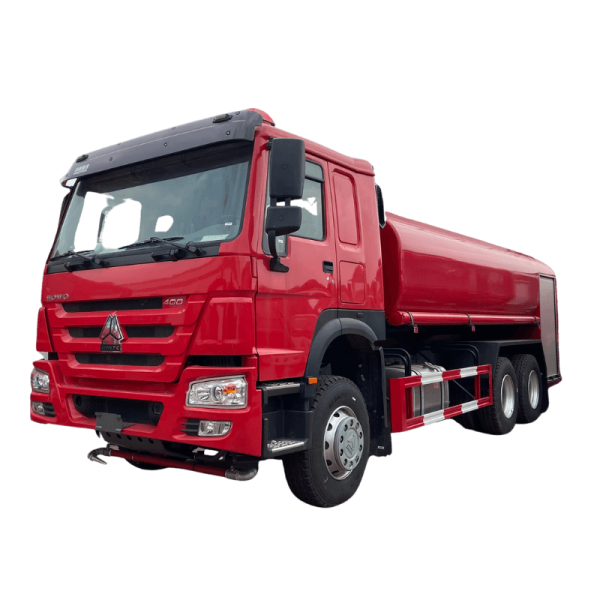Introduction:

Garbage trucks play a crucial role in waste management systems, collecting and transporting municipal solid waste from households and businesses to disposal sites. However, the traditional operation of garbage trucks often results in inefficiencies and high levels of waste generation. In recent years, there has been a growing emphasis on waste reduction and sustainability in the waste management sector, leading to innovations in garbage truck design and operation to minimize waste generation and maximize resource recovery. This article explores the various strategies and technologies that are being employed to reduce waste in garbage truck operations, ultimately contributing to a more sustainable and environmentally friendly waste management system.
1. Challenges in Traditional Garbage Truck Operations:
Traditional garbage truck operations are often associated with several challenges that contribute to high levels of waste generation and inefficiencies in waste management systems. Some of the key challenges include:
- Inefficient collection routes: Garbage trucks often follow predetermined routes that may not be optimized for maximum waste collection efficiency. This can result in unnecessary fuel consumption and emissions, as well as missed collections in certain areas.
- Lack of recycling and composting options: Many traditional garbage trucks are designed solely for the collection and transport of mixed municipal solid waste to landfill sites. This results in missed opportunities for recycling and composting, leading to higher levels of waste generation and disposal.
- Limited capacity and compaction: Traditional garbage trucks may have limited capacity for waste storage and inefficient compaction systems, leading to frequent trips to disposal sites and increased fuel consumption.
2. Innovations in Garbage Truck Design and Operation:
To address the challenges associated with traditional garbage truck operations and maximize waste reduction, various innovations have been introduced in garbage truck design and operation. These innovations aim to improve efficiency, increase resource recovery, and reduce waste generation in waste management systems. https://www.heli-truck.com/729/ of the key innovations include:
- Route optimization software: Advanced route optimization software is being used to plan efficient collection routes based on factors such as waste generation rates, traffic conditions, and geographic locations. By optimizing collection routes, garbage trucks can reduce fuel consumption, emissions, and collection times, ultimately leading to waste reduction.
- Dual-compartment trucks: Dual-compartment garbage trucks are equipped with separate compartments for different types of waste, such as recyclables and organic waste. This allows for the separate collection and transport of recyclable materials and organic waste, enabling higher levels of resource recovery and diversion from landfill disposal.
- Automated collection systems: Automated collection systems, such as robotic arms and side loaders, are being integrated into garbage trucks to streamline the waste collection process. These systems improve collection efficiency, reduce manual labor requirements, and minimize the risk of injuries to workers.
- Onboard waste sorting technologies: Some garbage trucks are now equipped with onboard waste sorting technologies that separate recyclable materials from mixed waste streams during collection. This allows for the immediate recovery of recyclables, reducing contamination and increasing the quality of recovered materials.
- Alternative fuel vehicles: Garbage trucks powered by alternative fuels, such as compressed natural gas (CNG) and electric batteries, are becoming increasingly popular in waste management fleets. These vehicles reduce greenhouse gas emissions and air pollutants, contributing to environmental sustainability in waste collection operations.
3. Case Studies and Best Practices:
Several municipalities and waste management companies have implemented innovative waste reduction strategies in garbage truck operations, showcasing best practices and success stories in the industry. Some notable case studies include:
- San Francisco, California: The city of San Francisco has implemented a comprehensive waste reduction program that includes source separation, composting, and recycling initiatives. Garbage trucks in San Francisco are equipped with dual-compartment systems for collecting recyclables and organic waste separately, leading to high diversion rates from landfill disposal.
- City of Toronto, Canada: The city of Toronto has introduced route optimization software in its waste management operations to improve collection efficiency and reduce fuel consumption. By optimizing collection routes, garbage trucks in Toronto have achieved significant cost savings and environmental benefits.
- Waste Management, Inc.: Waste Management, one of the largest waste management companies in the United States, has invested in alternative fuel vehicles and automated collection systems to enhance waste reduction in its operations. The company's fleet of CNG-powered garbage trucks has reduced greenhouse gas emissions and improved air quality in communities served.
4. Future Directions and Opportunities:
As the waste management sector continues to prioritize waste reduction and sustainability, there are several future directions and opportunities for further innovation in garbage truck operations. Some potential areas for development include:
- Integration of advanced sensor technologies: Advanced sensor technologies, such as RFID tags and GPS trackers, can be integrated into garbage trucks to monitor waste collection activities in real-time. These technologies enable data-driven decision-making and optimization of waste management processes.
- Adoption of circular economy principles: Garbage truck operations can benefit from adopting circular economy principles, which emphasize resource recovery, reuse, and recycling to minimize waste generation and maximize resource efficiency. By closing the loop on materials and products, garbage trucks can contribute to a more sustainable waste management system.
- Collaboration and partnerships: Collaborative efforts between municipalities, waste management companies, and technology providers can drive innovation in garbage truck operations. By sharing best practices, resources, and expertise, stakeholders can work together to develop solutions that enhance waste reduction and sustainability in waste management systems.
Conclusion:
In conclusion, maximizing waste reduction in garbage truck operations is essential for building a more sustainable and environmentally friendly waste management system. Through innovations in garbage truck design and operation, such as route optimization software, dual-compartment trucks, automated collection systems, and alternative fuel vehicles, waste management stakeholders can improve efficiency, increase resource recovery, and reduce waste generation. By implementing best practices and embracing future opportunities for innovation, the waste management sector can make significant strides towards a circular economy and a greener future for generations to come.
